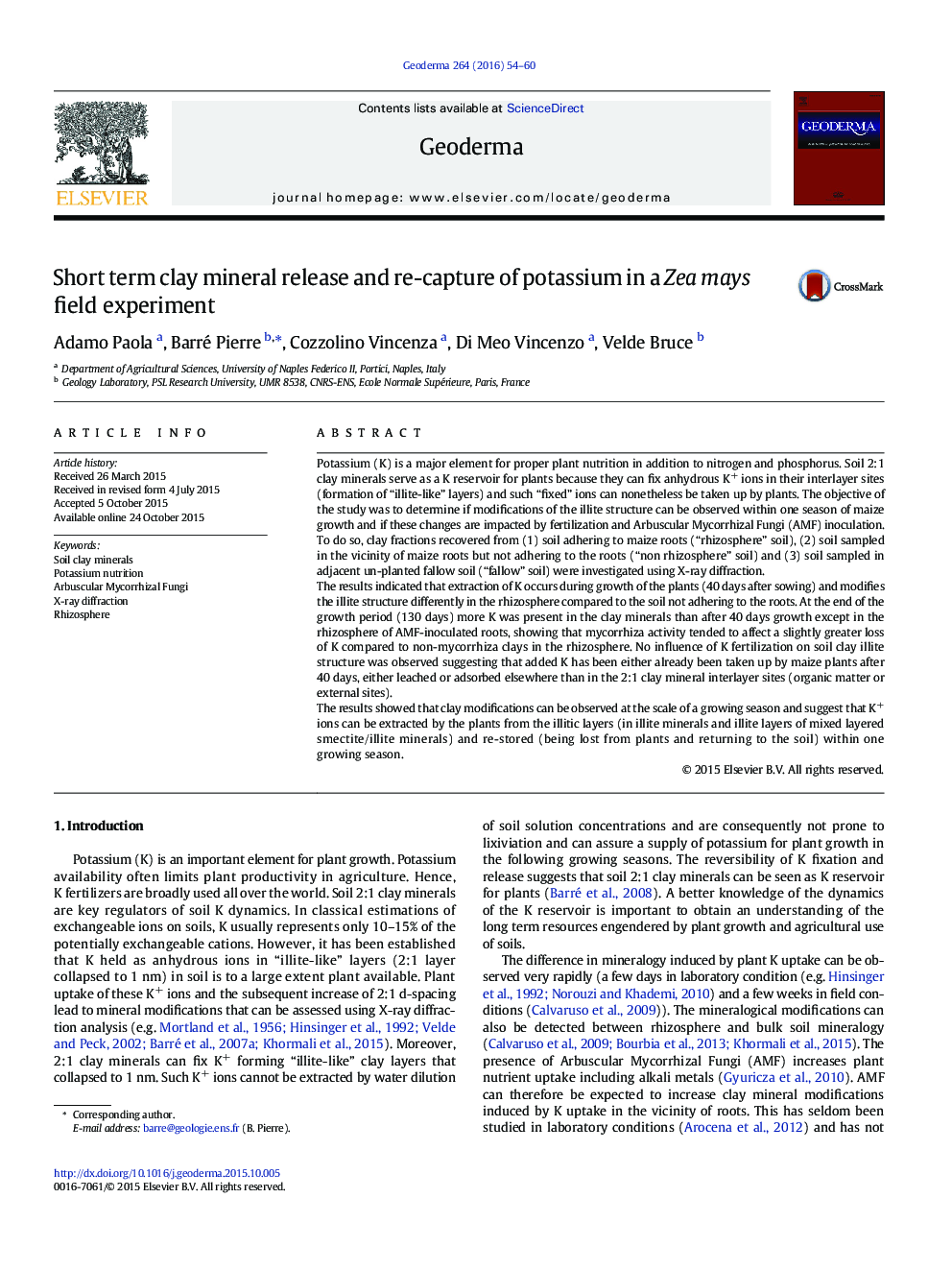| Article ID | Journal | Published Year | Pages | File Type |
|---|---|---|---|---|
| 4573082 | Geoderma | 2016 | 7 Pages |
•AMF fungi inoculation facilitates root K uptake from clay minerals•Clay modifications related to K dynamic were observed at the growing season scale.•Potassium ions were extracted and restored in illitic layers in one growing season.
Potassium (K) is a major element for proper plant nutrition in addition to nitrogen and phosphorus. Soil 2:1 clay minerals serve as a K reservoir for plants because they can fix anhydrous K+ ions in their interlayer sites (formation of “illite-like” layers) and such “fixed” ions can nonetheless be taken up by plants. The objective of the study was to determine if modifications of the illite structure can be observed within one season of maize growth and if these changes are impacted by fertilization and Arbuscular Mycorrhizal Fungi (AMF) inoculation. To do so, clay fractions recovered from (1) soil adhering to maize roots (“rhizosphere” soil), (2) soil sampled in the vicinity of maize roots but not adhering to the roots (“non rhizosphere” soil) and (3) soil sampled in adjacent un-planted fallow soil (“fallow” soil) were investigated using X-ray diffraction.The results indicated that extraction of K occurs during growth of the plants (40 days after sowing) and modifies the illite structure differently in the rhizosphere compared to the soil not adhering to the roots. At the end of the growth period (130 days) more K was present in the clay minerals than after 40 days growth except in the rhizosphere of AMF-inoculated roots, showing that mycorrhiza activity tended to affect a slightly greater loss of K compared to non-mycorrhiza clays in the rhizosphere. No influence of K fertilization on soil clay illite structure was observed suggesting that added K has been either already been taken up by maize plants after 40 days, either leached or adsorbed elsewhere than in the 2:1 clay mineral interlayer sites (organic matter or external sites).The results showed that clay modifications can be observed at the scale of a growing season and suggest that K+ ions can be extracted by the plants from the illitic layers (in illite minerals and illite layers of mixed layered smectite/illite minerals) and re-stored (being lost from plants and returning to the soil) within one growing season.
